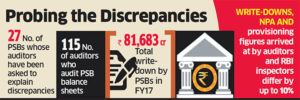
The income tax department will maintain the number of income tax returns (ITRs) chosen for scrutiny at the current level of less than 1% of all returns, in spite of a surge in individual tax filings to keep the process non-intrusive and taxpayer-friendly.
Gentle persuasion through text messages, emails and advertisements will remain the department’s main ways of interacting with taxpayers, while enforcement action will be reserved for cases where specific tip-offs regarding large-scale evasions have been received.
Out of the 52.8 million income-tax returns filed for the 2015-16 fiscal year, only about 300,000 cases, or around 0.6%, were scrutinized, a person privy to the deliberations within the tax department said on condition of anonymity.
“Even when the number of our assessees grow, scrutiny will be limited to this level—250,000-400,000 cases. It will always be less than 1% of returns received. We are absolutely non-intrusive to almost everyone. Even in most of the cases scrutinized, we do not hold searches or surveys,” the person cited above said, adding that the income-tax department vests its faith in taxpayers.
Searches conducted by the tax authorities—about 600 such cases happen in a year—will also stay at this level in future. “Only when we get very, very specific information of tax evasion of a substantial amount, we take enforcement action,” said the person.
The department recently sent 17 million text messages to individuals urging them to file returns for fiscal 2017 before the due date of 5 August, said the official.
This has led to a 25% jump in personal income-tax return filings for fiscal year 2016-17 to 27.9 million before the due date compared to the same period in the previous year.
Going by past trends, this figure could rise to about 66 million returns by the end of March 2018. Returns for a particular fiscal year can be filed by the end of the next year, called the assessment year, with interest on tax dues if any.
Close to three-fifths of the 52.8 million returns the department received for 2015-16 had come in after the due date in August 2016.
“Engaging with people through electronic means is easy and is a better strategy to ensure compliance than scrutinizing more tax returns. It is important for taxpayers to meticulously keep a record of their financial matters to remain compliant,” said Rahul Garg, a partner at consulting firm PwC India.
The income-tax department is also processing refunds faster. It has started issuing refunds within 10 days to taxpayers who have met the 5 August deadline for filing returns.
Individuals who make large purchases, such as houses, or cars priced above Rs10 lakh, but do not file income-tax returns figure among those who receive gentle reminders to file their returns as the authority secures information about such transactions from other sources.
Linking the permanent account number (PAN) used in filing tax returns with Aadhaar, the 12-digit number issued by Unique Identification Authority of India that identifies individuals using biometrics, is also enabling officials to check if the investments and spending of income-tax assessees are in line with their known sources of income.
So far, 94 million PANs have been linked with Aadhaar numbers after the central government made quoting the unique identification number compulsory for the filing of income-tax returns from July onwards.
Source: Live Mint






